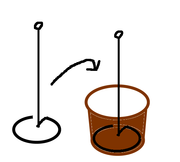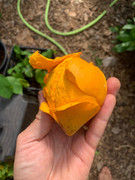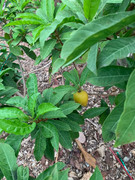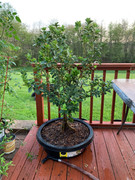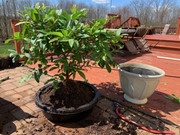38
« on: October 30, 2022, 09:41:46 PM »
Since moving many of my citrus and other container fruit trees into wide, shallow containers the two issues I am running into are
1) trees dry out quickly on hot days, which is expected
2) stability is a major issue at first when repotting into a shallow container. I end up having to use strings, sticks, weights, etc to keep them from flopping over, especially when they are loaded with fruit
So, against all conventional wisdom, I am trying something which helps solve both of these issues - heavy clay. My native soil is clay, I like to optimistically think of it as clay-loam but it is truly terrible when it comes to drainage. When wet it forms a thick mud that will pull your boots right off if you step in it.
Because I have recently been replacing my overly vigorous in-ground citrus trees with grafted-onto-flying-dragon clones, I end up with extras I no longer have use for. These extras become subjects of sometimes cruel experiments.
While repotting a half dozen trees today (into containers 3-4in deep), I added increasingly large amounts of clay soil to the usual free-draining mix. The last few received almost entirely clay. I watered them and a half hour later they were still saturated mud, I didn't keep waiting to see how long it would take to drain fully. The heavy soil definitely helps keep them upright without outside support.
My hope is that the clay soil will be acceptable for these wide shallow containers, my reasoning being that I can control how often they receive water (because they are greenhoused) and because of the shallowness they may still receive enough oxygen from the air, and the plants transpiration plus air evaporation will keep them from becoming stagnant. Trifoliate Orange is supposed to be one of the better rootstocks for clay also, I have read.
Why go through this trouble to accomodate atypical containers? It is mostly that I like the appearance of the tray style trees, that it eliminates the aggravation I have with discovering cylinder-pot trees have large dry spots or overly wet soil deep in their container, and that it lets me hang them up in the air without constantly hitting my head on the bottom of the pots.
My in-ground in-greenhouse citrus trees thrive in this soil, but they have no perched water table. I will report back how things work out.











